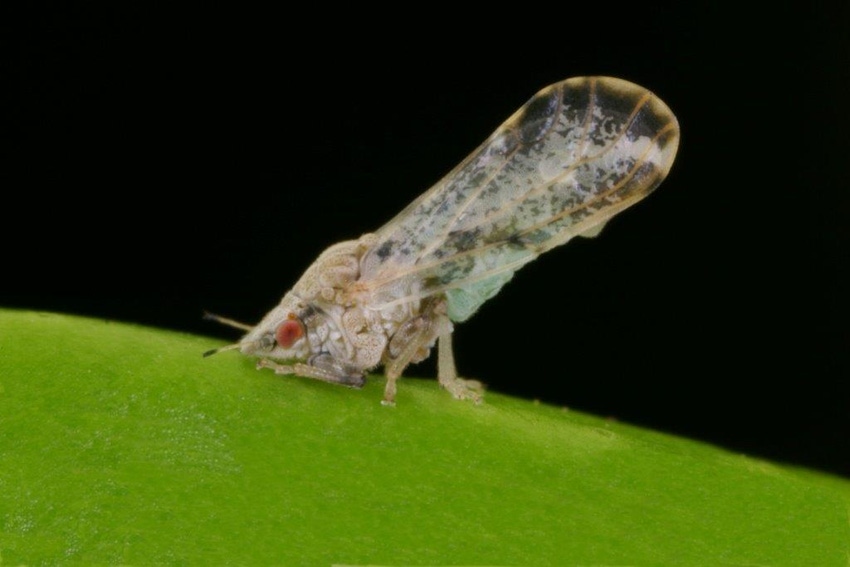June 21, 2016

An acoustic trap developed by USDA scientists may offer an environmentally friendly way to control Asian citrus psyllids, gnat-sized insect pests that transmit Huanglongbing, a devastating citrus disease also known as citrus greening.
Infected citrus trees cannot be cured and often die within several years. Until such time, they may bear green, misshapen fruit with acidic-tasting juice, making the fruit unmarketable.
Concern over the cost and long-term environmental impact of using insecticides to control psyllid populations in citrus-growing states like Florida has prompted an intensive search for alternative measures, notes Richard Mankin, an entomologist with USDA’s Agricultural Research Service (ARS) in Gainesville, Florida.
Mankin’s idea for the acoustic trap came from his studies of how insect pests use smell, sight, or hearing to locate food and mates. Together with a team of University of Florida graduate students, he decoded the psyllid’s signaling patterns and recreated them with electronics (piezoelectric buzzer and microphone connected to an Arduino microcontroller).
In 2015, the team tested the concept in the laboratory. They used a prototype of the system rigged up to young citrus plants harboring adult male and female psyllids.
In nature, a male psyllid begins the courtship by beating his wings rapidly in a precise pattern, sending vibrations through the twig or branch on which he sits. If a receptive female psyllid is nearby, she replies with her own vibrational call—typically one half-second later.
Normally, the male crawls toward the female. In the lab studies, however, the acoustic system responded a tenth of a second sooner with a fake call of its own, luring the males toward a sticky trap. In experiments with the trap, male psyllids were four times less likely to locate responding females than males in nontrap (control) groups.
Mankin’s team is refining the acoustic trap—and trying to reduce its costs to about $50—for use in field trials. Their goal is to evaluate the trap’s ability to distinguish male vibrational signals from “background chatter” within trees and then mimic a female psyllid’s call strongly and quickly enough to be effective.
Mankin’s team is refining the trap for outdoor testing this summer. Read more about this research in the May 2016 issue of AgResearch magazine.
You May Also Like




